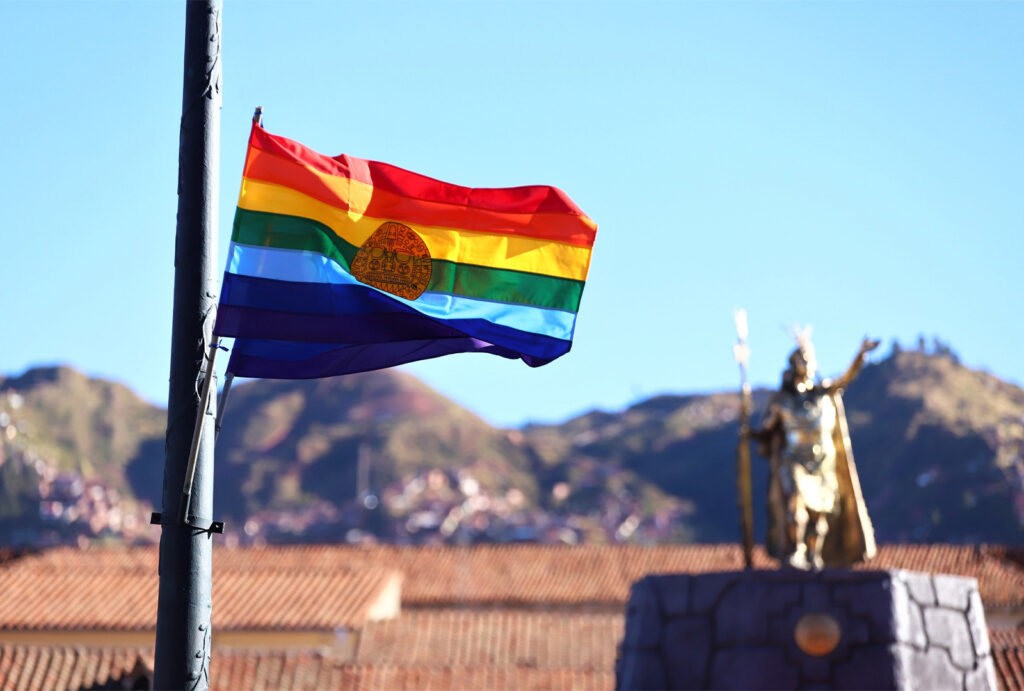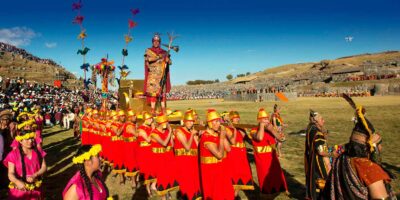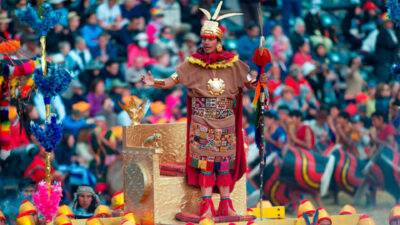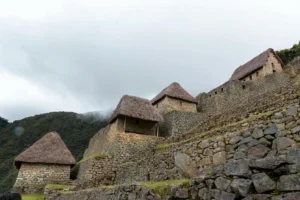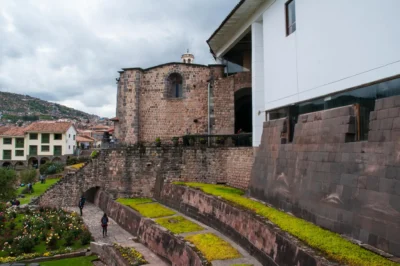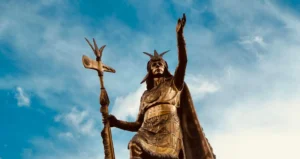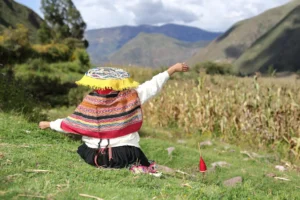Visitar la ciudad de Cusco involucra toparte con el colorido de sus calles, textiles e incluso su bandera arcoíris que ondea en plazas, casas y edificios históricos. La bandera del Cusco tiene una historia propia, cargada de simbolismo y un trasfondo cultural que la conecta con la identidad andina. Acompáñanos a descubrir el origen de este emblemático símbolo cusqueño, su significado profundo, y las razones detrás de la polémica y el debate que rodean su uso hoy en día por su parecido a la bandera LGBTQ+.
Origin of the Flag of Cusco and Its Official History
Creation by Raúl Montesinos and Official Adoption
In 1973, a Cusqueñan businessman named Raúl Montesinos Espejo wanted to highlight the identity of the region. He sought an emblem that would represent the Andean spirit and chose the rainbow for its connection to fertility and nature, elements deeply revered in the Andean worldview.
In 1978, the mayor at the time, Mr. Gilberto Muñiz Caparó, officially adopted the flag as a local emblem. Since then, this flag has flown over the city, becoming a recognized symbol of Cusqueñan culture and Inca heritage.
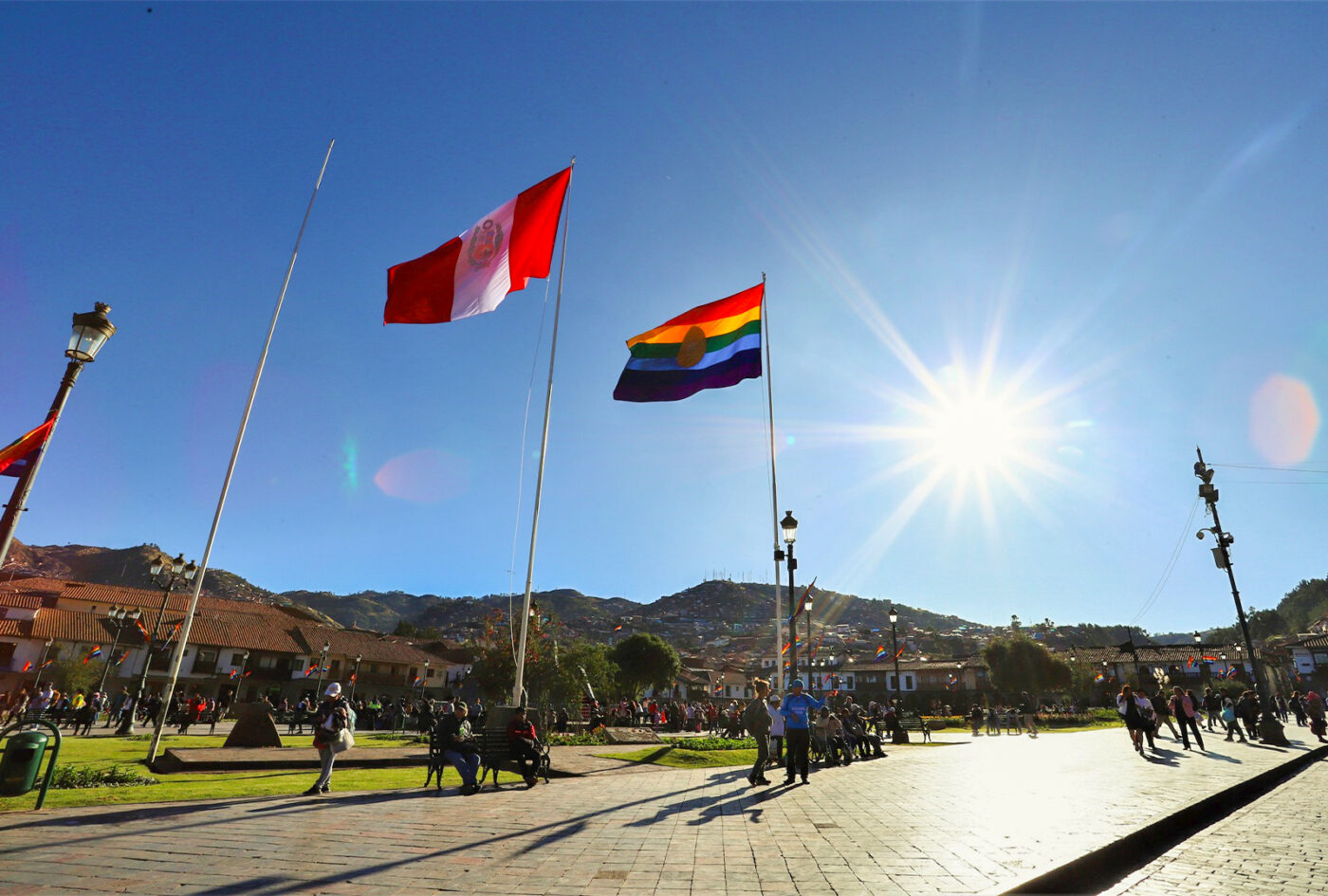
Relationship with Inca Mythology and Pre-Hispanic Symbols
To understand the true background of the Cusqueñan flag, it is important to look back at the beliefs of ancient pre-Hispanic cultures. In Inca cosmology, the rainbow represents fertility and the promise of life, as it is linked to rain and, therefore, to agriculture, one of the most important activities for Andean civilizations. The Incas and their predecessors considered the rainbow a sacred symbol that connected the earth and the sky.
By adopting the rainbow, the Cusqueñan flag honors this cultural legacy. The colors of this flag evoke the ancestral connection to the earth and the cycles of nature, as well as the diversity of the peoples that shape Cusqueñan identity.
Confusion with the LGBT Flag and Key Differences
Evolution of the Design and Changes in 2021
One of the most controversial points surrounding the Cusco flag is the confusion with the LGBTQ+ pride flag, which also uses the rainbow design. This confusion has led to debates and uncomfortable situations, especially at international events where both flags can be misinterpreted.
Unlike the LGBTQ+ flag, the Cusco flag has seven colors instead of six, adding an additional color (sky blue) that distinguishes it. Despite this difference, in 2021, due to the growing confusion, some proposals suggested modifying the design of the Cusco flag to further differentiate it, although these changes have not been officially implemented.
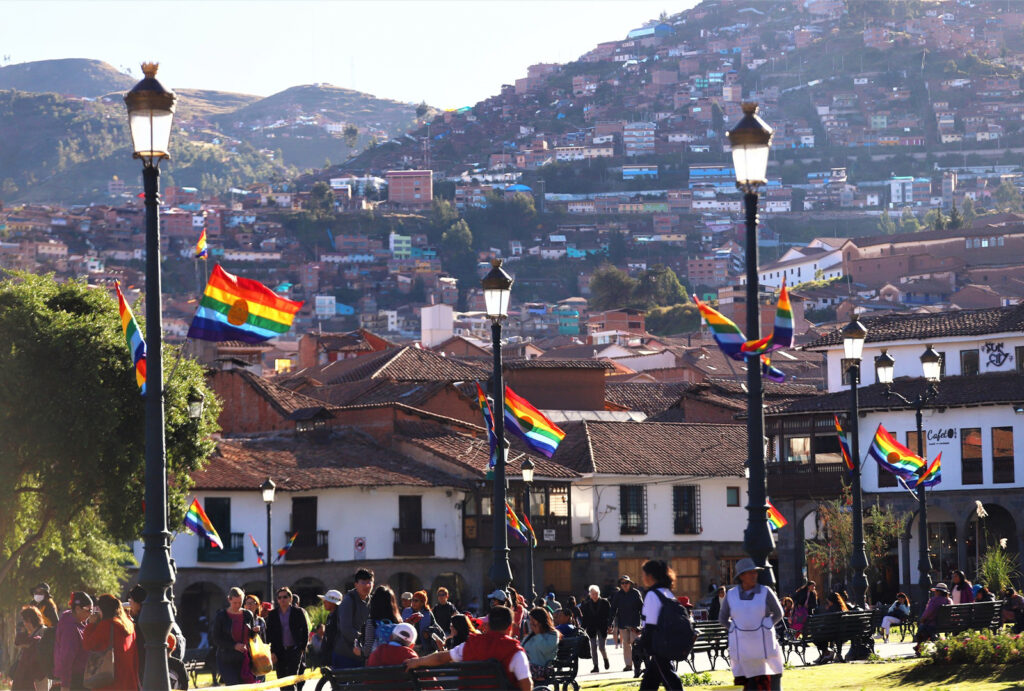
Distinctive Colors and Cultural Significance in Cusco
Each color in the Cusco flag has a symbolic meaning that reflects important aspects of Andean culture and worldview:
- Red: Represents the land and Andean life.
- Orange: Symbolizes society and culture.
- Yellow: Refers to energy and natural resources.
- Green: Is associated with flora, fauna, and nature in general.
- Sky Blue: Connects with the sky and ancestral spirits.
- Blue: Represents space and infinity.
- Violet: Refers to spirituality and the unity of peoples.
Each of these colors reinforces Cusqueñan identity and its relationship with the land and the natural environment. The Cusco flag differs from the LGBTQ+ flag in the number of colors and the order in which they appear, but both aim to represent diversity, each in its own context.
Controversy and Debate Over the Use of the Rainbow
Positions in Favor of Keeping the Original Flag
There are those who defend the Cusco flag in its original form, arguing that the rainbow has been an ancestral symbol in the Andean region long before its adoption by the LGBTQ+ movement. For many Cusqueños, the flag represents an essential part of their identity and history. They consider it a cultural heritage that deserves to be preserved without modifications, as changing its design could dilute its symbolic value and lose its authenticity.
Proposals to Change the Design and Avoid Confusion
On the other hand, there is a sector that supports modifying the design of the Cusco flag to reduce confusion with the LGBTQ+ flag. Some have suggested including additional Inca symbols or unique colors that would reinforce Cusqueñan identity without altering its meaning. However, so far, none of these proposals have been officially accepted, and the debate continues between those advocating for the preservation of the original flag and those who consider it necessary to adapt it to avoid misunderstandings.
Symbolism and Meaning of the Colors in the Flag of Cusco
As mentioned, the colors of the Cusco flag were not chosen randomly; each holds a symbolic value connected to the Andean worldview. In this vision, the world is composed of three planes: the upper world (Hanan Pacha), the present world (Kay Pacha), and the underworld (Ukhu Pacha), each represented by colors and elements of nature.
The Cusco flag not only expresses the region’s diversity but also its unique identity and cultural heritage. The colors of the flag reflect the mountains, rivers, sky, and life itself that surround this sacred city, making it a symbol of Andean resistance and pride.
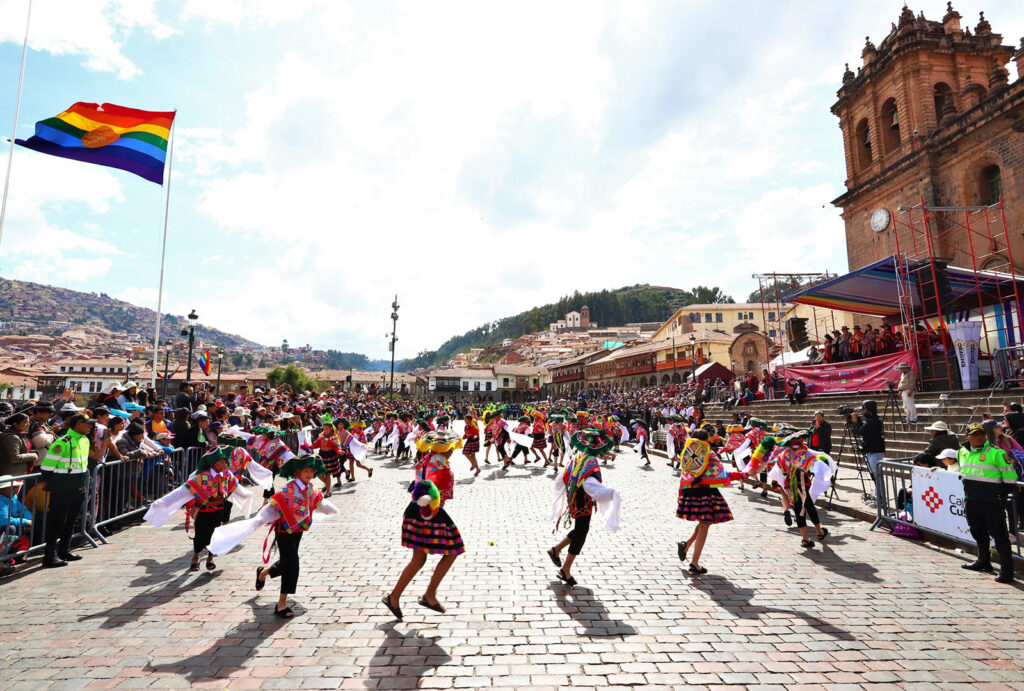
Adoption of the Flag as a Modern Andean Emblem
In recent decades, the Cusco flag has transcended its local use to become a symbol of the modern Andean movement. Many organizations in the Andean region have adopted the rainbow as an emblem of indigenous identity and the struggle for the rights of native peoples. This process of adoption reinforces the sense of belonging and strengthens the cultural bond between different communities in the Andes.
In this sense, the Cusco flag has gained additional value, uniting peoples from different South American countries under a common symbol that represents their heritage and their ancestral connection to the land.
Image of the Flag of Cusco
